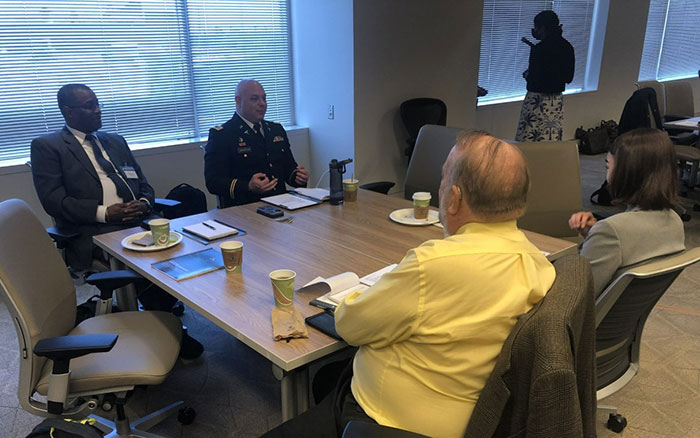New Perspectives Key as USAMRDC Plots Future of Blast Injury Care

On August 16, the U.S. Department of Defense International Blast Injury Research State-of-the-Science Meeting kicked off in Arlington, Virginia. The two-day event, which was sponsored by the U.S. Army Medical Research and Development Command and the RAND Corporation, was established to identify critical capability gaps in order to help chart a detailed course of action for the next several decades of blast injury modeling and research.
"It's not about now, it's about the future, and so these are critical conversations that need to occur," said Lt. Col. Jacob Johnson, director of USAMRDC's Blast Injury Research Coordinating Office and the Joint Trauma Analysis and Prevention of Injury in Combat program office. Johnson also served as a key organizer for the meeting. "We are taking a whole-person approach – a whole-battalion approach, really – to better understand how to treat Service Members impacted by blast injuries so they can continue to complete their mission."
The emergence of improvised explosive devices on the battlefield – particularly during Operations Iraqi and Enduring Freedom – and the resulting injury profile, which ranges anywhere from hemorrhage to internal organ damage to traumatic brain injury and beyond, has given increased urgency to the study of blast injuries over the past decade. As such, the state-of-the-science meeting placed an importance on concepts related to complex modeling efforts in order to more accurately predict the impact of various blast injuries on the human body. Outside of the team at MRDC, attendees included representatives from nationally-recognized universities, as well as those from the National Institutes of Health, the National Science Foundation and the Southwest Research Institute.
"It's important and exciting to get together to road map the next generation of blast injury studies," said Dr. Grace Peng, director of Mathematical Modeling, Simulation and Analysis at the National Institute of Biomedical Imaging and Bioengineering, during a keynote address to meeting attendees. Notably, Peng's presentation focused on the potential for the use of 'virtual coaches' – a method of machine learning that is based upon virtual reality technology – in order to boost predictive modeling efforts related to blast injuries. "We're trying to set best practices and then use grand challenges to guide us in meeting our goals."
Those goals ultimately include delivering a refined version of the 'blast injury roadmap' developed during the meeting to USAMRDC's science and technology partners in the hopes that those entities can create the technologies recommended by the meeting attendees. For Johnson, who is fond of using sports analogies to describe this type of team-building process, each step is integral to future success.
"There's a lot of sports stadiums out there," he said, noting the similarities. "It's my job to get you to the right one. Then, at that point, you can assemble the right players – the scientists, the engineers – to play the right game."
According to the attendees, the current meeting carries even more weight given that an in-person iteration of the event had been cancelled for the past two years due to concerns about the COVID-19 pandemic. For Johnson, the delay underscores the urgency for such a meeting; the kind of gritty, detailed gathering required to ensure the safety and security of Warfighters in the future and beyond.
Said Johnson, "At this meeting, for our purposes now, our imagination is our only guide."














